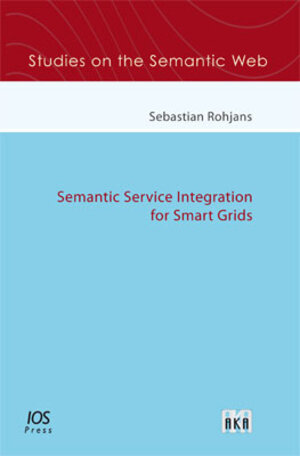
×
![Buchcover ISBN 9783898386777]()
- System integrators for Utilities (Developers, CTOs, Software line/product management executives)
- System integrators looking for business in the utility sector
- SCADA, secondary IT, GIS, IED, and automation systems vendors
- Automation technology vendors (e.g. Siemens, ABB, Areva, Alstom)- Communications technology vendors (e.g. NSN)- Utility CTOs, utilities- Utility R&D Departments- Members in standardization bodies (international)- Members of CIM Users Group and OPC Foundation- Integrators from telecommunications domain- Students (courses on renewable energies, Smart Grid, integrated environ-mental modeling)- Academics (R&D – Focus technology transfer)
Semantic Service Integration for Smart Grids
von Sebastian RohjansThe scope of the research presented includes semantic-based integration of data services in smart grids achieved through following the proposed (S²)In-approach developed corresponding to design science guidelines. This approach identifies standards and specifications, which are integrated in order to build the basis for the (S²)In-architecture. A process model is introduced in the beginning, which serves as framework for developing the target architecture. The first step of the process stipulates to define requirements for smart grid ICT-architectures being derived from established studies and divided into two classes: architecture and non-functional requirements (NFR). Based on the architecture requirements, the following specifications have been basically selected: The IEC CIM representing a domain-specific data model, the OPC UA being a communication standard with special respects to information modeling, and WSMO as an approach to realize the concept of Semantic Web Services. The next step specifies to develop both, a semantic information model (integration of CIM and OPC UA) and semantic services (integration of CIM and WSMO). These two components are then combined to obtain the target architecture, which allows precise descriptions of services as well as their combination and semi-automatic execution. Finally, the NFR are considered in order to evaluate the architecture based on simulated, representative use cases.


